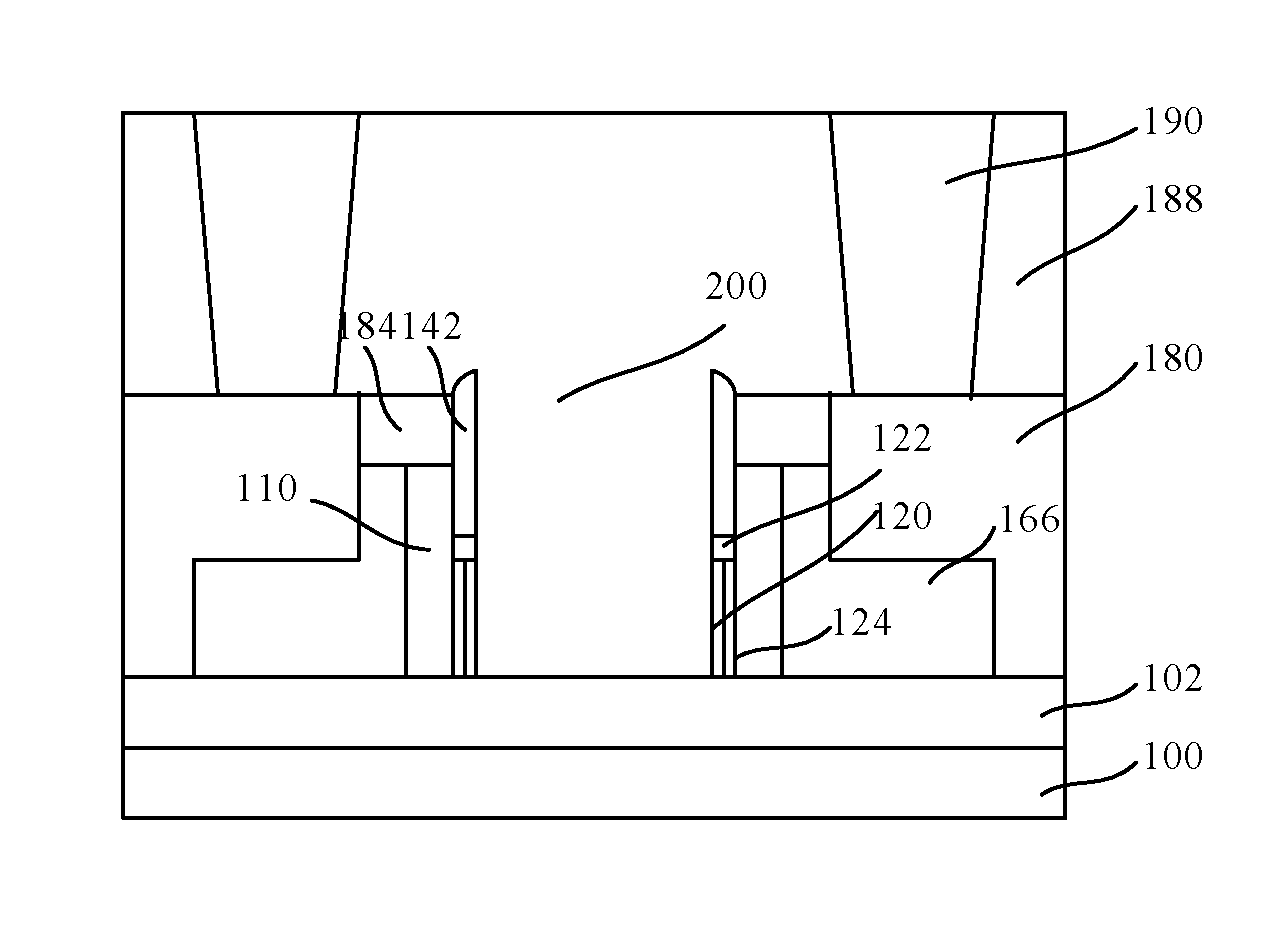Method for manufacturing semiconductor device
a semiconductor and manufacturing method technology, applied in the field of semiconductor technology, can solve the problems of reducing the signal-to-noise ratio, reducing the gate threshold voltage, deteriorating the electrical properties of the device, etc., and achieves the effect of increasing the distance, increasing the distance, and reducing the parasitic capacitan
- Summary
- Abstract
- Description
- Claims
- Application Information
AI Technical Summary
Benefits of technology
Problems solved by technology
Method used
Image
Examples
Embodiment Construction
[0039]The disclosure below provides various embodiments or examples for carrying out the technical solution of the present invention. Although the components and arrangements of some specific examples are described, they are only examples, and are not construed as limiting the present invention.
[0040]Moreover, reference numerals and / or letters are repeated in various embodiments. The repetition is for simplicity and clarity, and does not represent relationship between various embodiments and / or settings to be discussed below.
[0041]Various specific processes and / or materials are used in the present invention. Nevertheless, one skilled person in the art will appreciate that other processes and / or materials can also be used as alternatives without departing from the protection scope of the invention. It should be noted that boundaries of various regions described herein include necessary extensions introduced by the process.
[0042]According to the present invention, there is provided a ...
PUM
 Login to View More
Login to View More Abstract
Description
Claims
Application Information
 Login to View More
Login to View More - R&D
- Intellectual Property
- Life Sciences
- Materials
- Tech Scout
- Unparalleled Data Quality
- Higher Quality Content
- 60% Fewer Hallucinations
Browse by: Latest US Patents, China's latest patents, Technical Efficacy Thesaurus, Application Domain, Technology Topic, Popular Technical Reports.
© 2025 PatSnap. All rights reserved.Legal|Privacy policy|Modern Slavery Act Transparency Statement|Sitemap|About US| Contact US: help@patsnap.com



